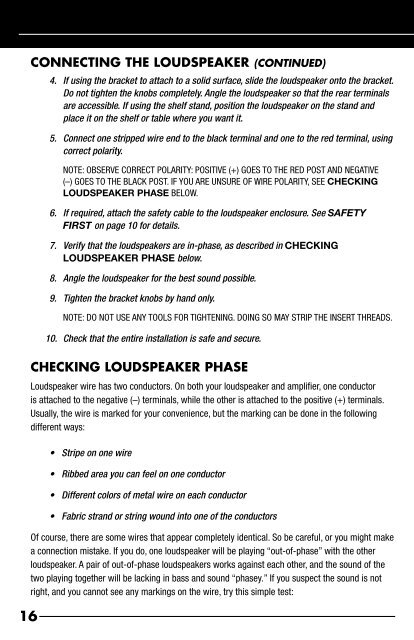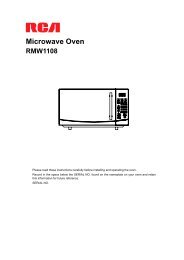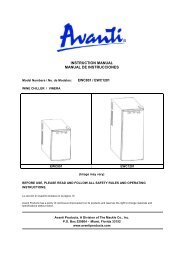Manual - Niles Audio
Manual - Niles Audio
Manual - Niles Audio
Create successful ePaper yourself
Turn your PDF publications into a flip-book with our unique Google optimized e-Paper software.
16<br />
CONNECTING THE LOUDSPEAKER (CONTINUED)<br />
4. If using the bracket to attach to a solid surface, slide the loudspeaker onto the bracket.<br />
Do not tighten the knobs completely. Angle the loudspeaker so that the rear terminals<br />
are accessible. If using the shelf stand, position the loudspeaker on the stand and<br />
place it on the shelf or table where you want it.<br />
5. Connect one stripped wire end to the black terminal and one to the red terminal, using<br />
correct polarity.<br />
NOTE: OBSERVE CORRECT POLARITY: POSITIVE (+) GOES TO THE RED POST AND NEGATIVE<br />
(–) GOES TO THE BLACK POST. IF YOU ARE UNSURE OF WIRE POLARITY, SEE CHECKING<br />
LOUDSPEAKER PHASE BELOW.<br />
6. If required, attach the safety cable to the loudspeaker enclosure. See SAFETY<br />
FIRST on page 10 for details.<br />
7. Verify that the loudspeakers are in-phase, as described in CHECKING<br />
LOUDSPEAKER PHASE below.<br />
8. Angle the loudspeaker for the best sound possible.<br />
9. Tighten the bracket knobs by hand only.<br />
NOTE: DO NOT USE ANY TOOLS FOR TIGHTENING. DOING SO MAY STRIP THE INSERT THREADS.<br />
10. Check that the entire installation is safe and secure.<br />
CHECKING LOUDSPEAKER PHASE<br />
Loudspeaker wire has two conductors. On both your loudspeaker and amplifier, one conductor<br />
is attached to the negative (–) terminals, while the other is attached to the positive (+) terminals.<br />
Usually, the wire is marked for your convenience, but the marking can be done in the following<br />
different ways:<br />
• Stripe on one wire<br />
• Ribbed area you can feel on one conductor<br />
• Different colors of metal wire on each conductor<br />
• Fabric strand or string wound into one of the conductors<br />
Of course, there are some wires that appear completely identical. So be careful, or you might make<br />
a connection mistake. If you do, one loudspeaker will be playing “out-of-phase” with the other<br />
loudspeaker. A pair of out-of-phase loudspeakers works against each other, and the sound of the<br />
two playing together will be lacking in bass and sound “phasey.” If you suspect the sound is not<br />
right, and you cannot see any markings on the wire, try this simple test:

















